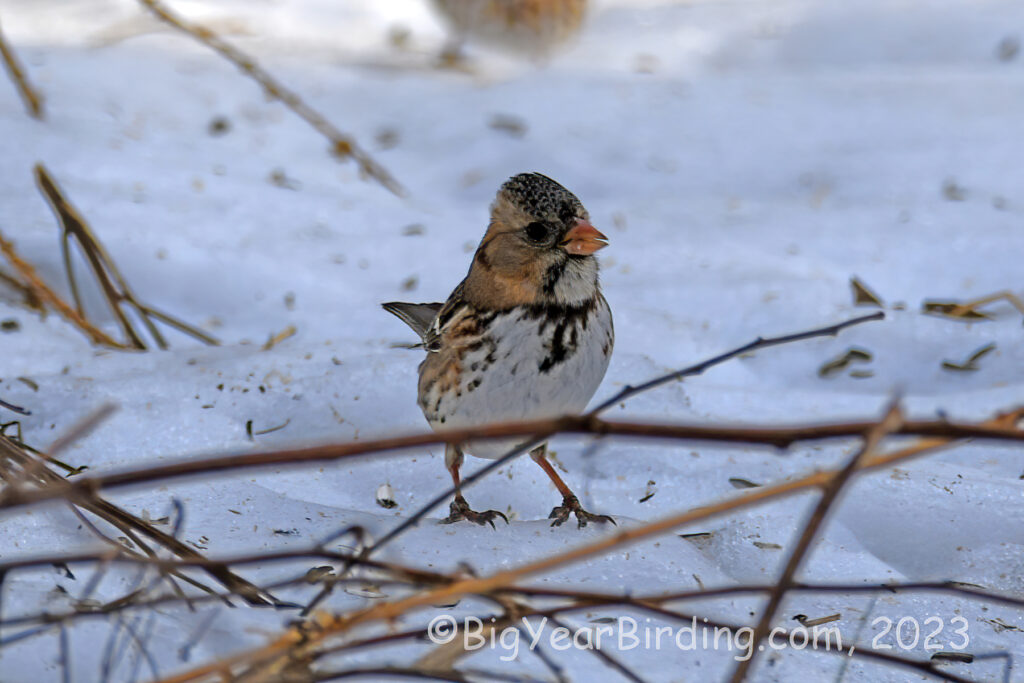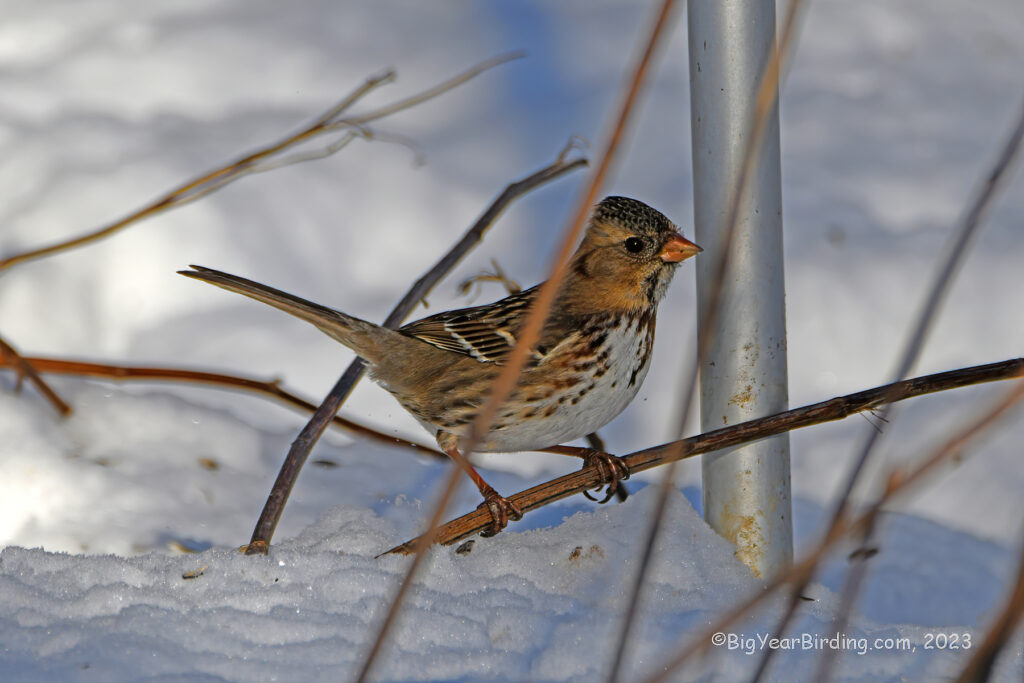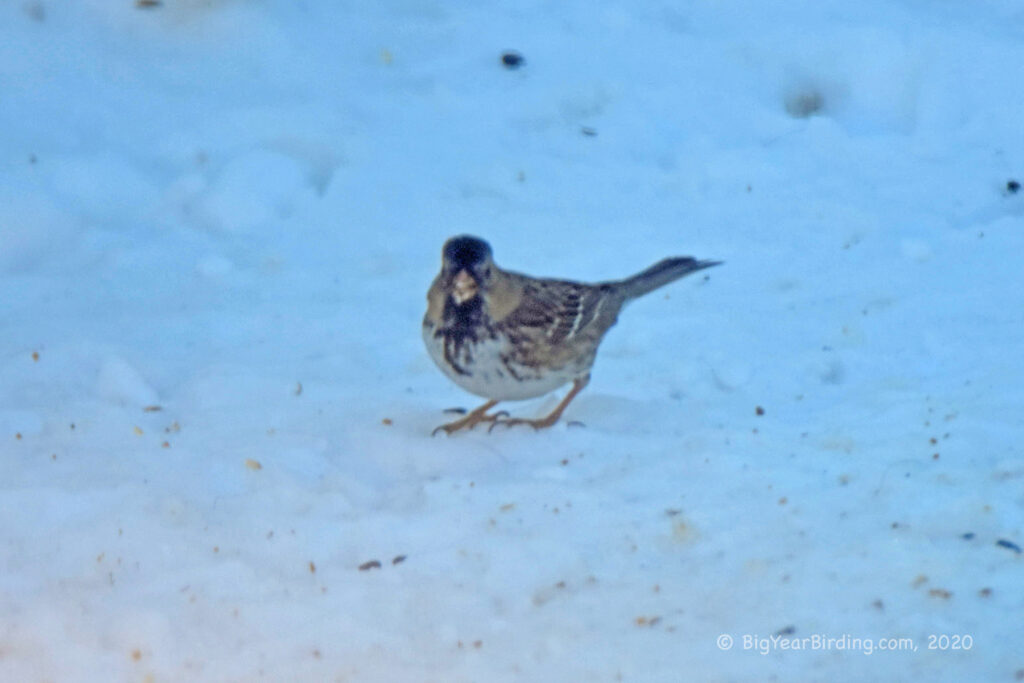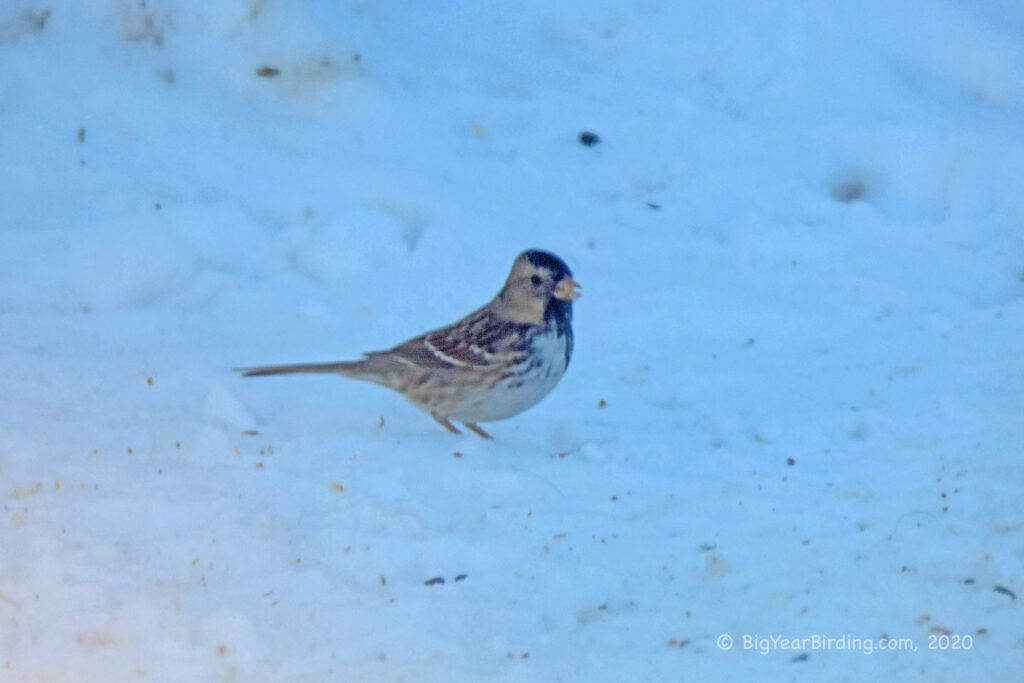
The Harris’s sparrow (Zonotrichia querula) is a large sparrow species native to North America. Measuring approximately 7.5-8.5 inches in length and weighing between 1.2-1.8 ounces, the Harris’s sparrow is one of the largest sparrows found in North America. These birds have a wingspan of approximately 11.8-13.4 inches and a tail that is slightly shorter than the length of their wings.

The Harris’s sparrow is easily identifiable by its distinct field markings. It has a black crown and bib that extends down to the chest, with a gray face and nape. The bird’s back and wings are brown, and its underparts are white. The Harris’s sparrow also has a large, conical pink bill and dark eyes. Juveniles have similar markings to adults, but their black bib is less extensive.
The Harris’s sparrow is a long-distance migrant, breeding in northern Canada and Alaska and wintering in the central United States, primarily in Kansas, Nebraska, and Oklahoma. In spring and fall, these birds migrate through the central United States, with some populations traveling over 1,500 miles. The Harris’s sparrow’s migration is believed to be driven by changes in day length and availability of food.
During the breeding season, the Harris’s sparrow can be found in tundra and taiga habitats in northern Canada and Alaska, often near water. These birds breed in loose colonies and construct cup-shaped nests on the ground or in low shrubs. The Harris’s sparrow’s diet primarily consists of seeds and insects, with a preference for seeds of grasses and sedges.

Despite being a relatively large sparrow, the Harris’s sparrow is not commonly seen by birdwatchers due to its remote breeding and wintering habitats. However, during migration, birdwatchers may have the opportunity to observe these birds in areas like the Great Plains and the Midwest. The Harris’s sparrow’s striking appearance and unique range make it a sought-after sighting for bird enthusiasts.

